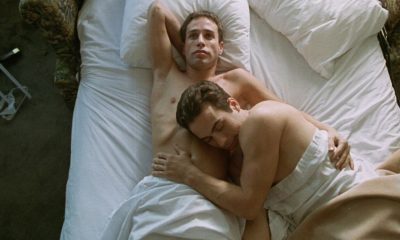Movies
In LaBruce’s ‘The Visitor,’ the revolution will be sexualized
Exploring the treatment of ‘otherness’ in a society governed by xenophobia
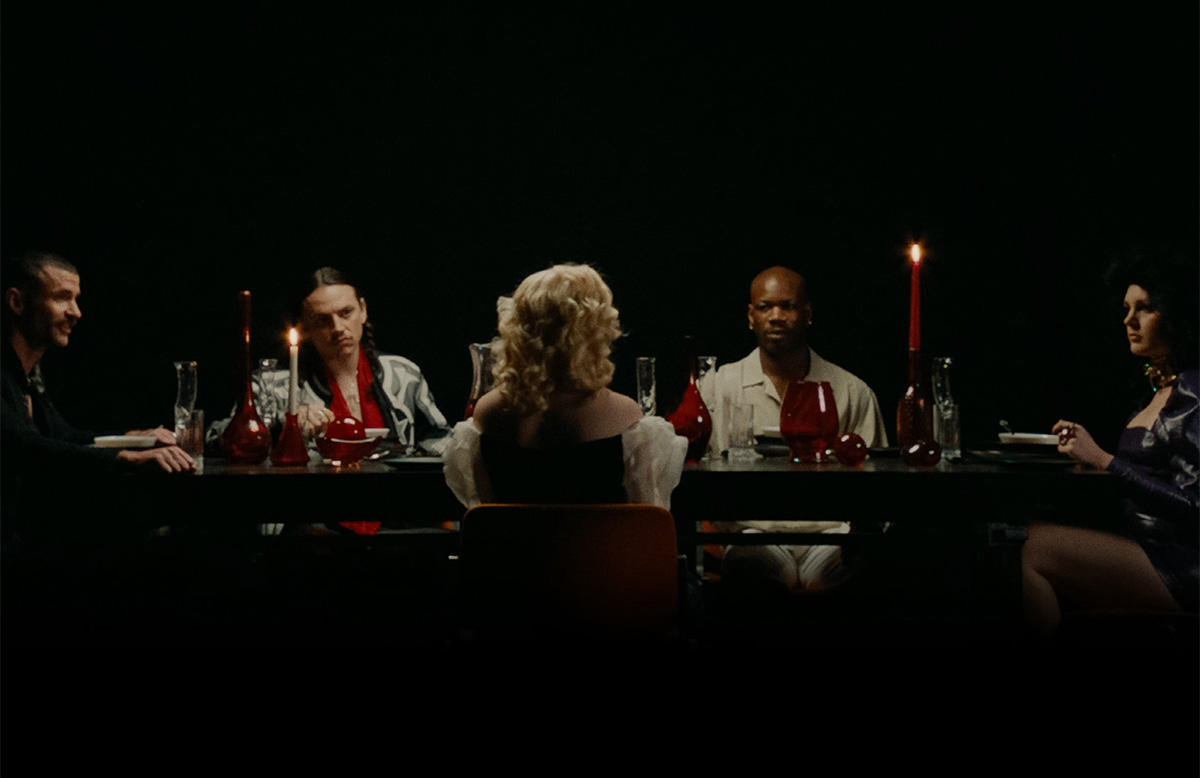
If any form of artistic expression can be called the “front line” in the seemingly eternal war between free speech and censorship, it’s pornography.
In the U.S., ever since a 1957 Supreme Court ruling (Roth v. U.S.) made the legal distinction between “pornography” (protected speech) and “obscenity” (not protected speech), the debate has continued to stymie judicial efforts to find a standard to define where that line is drawn in a way that doesn’t arguably encroach on First Amendment rights – but legality aside, it’s clearly a matter of personal interpretation. If something an artist creates features material that depicts sexual behavior in a way that offends us (or doesn’t, for that matter), no law is going to change our mind.
That’s OK, of course, everyone has a right to their own tastes, even when it comes to sex. But in an age when the conservative urge to censor has been weaponized against anything that runs counter to their repressive social agenda, it’s easy to see how labeling something as too “indecent” to be lawfully expressed can be used as a political tactic. History is full of authoritarian power structures for whom censorship was used to silence – or even eliminate – anyone who dares to oppose them. That’s why history is also full of radical artists who make it a point to push the boundaries of what is “acceptable” creative expression and what is not.
Indeed, some of these artists see such cultural boundaries as just another way for a ruling power to enforce social conformity on its citizens, and consider the breaking of them not just a shock tactic but a revolutionary act – and if you’re a fan of pioneering countercultural filmmaker Bruce LaBruce, then you know that’s a description that fits him well.
LaBruce, a Canadian who rose to underground prominence as a writer and editor of queer punk zines in the ‘80s before establishing himself as a photographer and filmmaker in the “Queercore” movement, has never been deterred by cultural boundaries. His movies – from the grit of his gay trick-turning comedy “Hustler White,” through the slick pornographic horror of “LA Zombie,” to the taboo-skewering sophistication of his twin-cest romance “St. Narcisse” – have unapologetically featured explicit depictions of what some might call “deviant” sex. Other films, like the radical queer terrorist saga “The Raspberry Reich” and the radical feminist terrorist saga “The Misandrists,” have been more overtly political, offering savagely ludicrous observations about extremist ideologies and the volatile power dynamics of sex and gender that operate without regard for ideologies at all. Through all of his work, a cinematic milieu has emerged that exists somewhere between the surreal iconoclasm of queer Italian provocateur Pier Paolo Pasolini and the monstrous camp sensibility of John Waters, tied together with an eye for arresting pop art visuals and a flair for showmanship that makes it all feel like a really trashy – and therefore really good – exploitation film.
In his latest work, he brings all those elements together for a reworking of Pasolini’s 1968 “Teorema,” in which an otherworldly stranger enters the life of an upper class Milanese family and seduces them, one by one. In “The Visitor,” Pasolini’s Milan becomes LaBruce’s London, and the stranger becomes an impressively beautiful, sexually fluid alien refugee (burlesque performer Bishop Black) who arrives in a suitcase floating on the Thames. Insinuating himself into the home of a wealthy family with the help of the maid (Luca Federici), who passes him off as her nephew, he exerts an electrifying magnetism that quickly fascinates everyone who lives there. Honing in on their repressed appetites, he has clandestine sex with each in turn – Maid, Mother (Amy Kingsmill), Daughter (Ray Filar), Son (Kurtis Lincoln), and Father (Macklin Kowal) – before engaging in a incestuous pansexual orgy with them all. When the houseguest departs as abruptly as he arrived, the household is left with its bourgeois pretensions shattered and its carnal desires exposed, each of them forced to deal with the consequences for themselves.
Marked perhaps more directly than LaBruce’s other work with direct nods to his influences, the film is dedicated to Pasolini himself, in addition to numerous visual references throughout which further underscore the “meta-ness” of paying homage to the director in a remake of one of his own films; there are just as many call-backs to Waters, most visibly in some of the costume choices and the gender-queered depiction of some of its characters, but just as obviously through the movie’s “guerilla filmmaking” style and its gleefully transgressive shock tactics – especially a dinner banquet sequence early on which leisurely rubs our noses in a few particularly dank taboos. There are also glimpses and echoes of Hitchcock, Kubrick, Lynch, and other less controversial (but no less challenging) filmmakers whose works have pushed many of the same boundaries from behind the veneer of mainstream respectability.
Despite all of these tributes, however, “The Visitor” is pure LaBruce. Celebratory in its depravity and unflinching in its fully pornographic (and unsimulated) depictions of sex, from the blissfully erotic to the grotesquely bestial, it seems determined to fight stigma with saturation – or at least, to push the buttons of any prudes who happen to wander into the theater by mistake – while mocking the fears and judgments that feed the stigmas in the first place.
That doesn’t mean it’s all fluid-drenched sex and unfettered perversion; like Pasolini and his other idols, LaBruce is a keenly intellectual filmmaker, and there’s a deeper thread that runs throughout to deliver an always-relevant message which feels especially so right now: the treatment of “otherness” in a society governed by homogeny, conformity, and xenophobia. “The Visitor” even opens with a voiceover radio announcer lamenting the influx of “brutes” into the country, as suitcases bearing identical immigrants (all played by Black) appear across London, and it is by connecting to the hidden “other” in each of his conquests that our de facto protagonist draws them in.
LaBruce doesn’t just make these observations, however; he also offers a solution (of sorts) that matches his fervor for revolution – one in which the corruption of the ruling class serves as an equalizing force. In each of the Visitor’s extended sexual episodes with the various family members, the director busts out yet another signature move by flashing propaganda-style slogans – “Give Peace of Ass a Chance,” “Go Homo,” and “Join the New Sexual World Order” are just a few colorful examples – that are as heartfelt as they are hilarious. In LaBruce’s revolution, the path to freedom is laid one fuck at a time, and it’s somehow beautiful – despite the inevitable existential gloom that hovers over it all.
Obviously, “The Visitor” is not for all tastes. But if you’re a Blade reader, chances are your interest will be piqued – and if that’s the case, then welcome to the revolution. We need all the soldiers we can get.
“The Visitor” is now playing in New York and debuts in Los Angeles March 14, and will screen at roadshow engagements in cities across the U.S. Information on dates, cities, and venues (along with tickets) is available at thevisitor.film/.
Movies
‘Pink Narcissus’ reasserts queer identity in the face of repression
Gorgeously restored film a surreal fantasia on gay obsessions

Back in 1963, there really wasn’t such a thing as “Queer Cinema.”
Of course there had been plenty of movies made by queer people, even inside Hollywood’s tightly regulated studio system; artists like George Cukor and Vincente Minnelli brought a queer eye and sensibility to their work, even if they couldn’t come right out and say so, and became fluent in a “coded” language of filmmaking that could be deciphered by audience members “in the know,” while everyone else – including the censors – remained mostly oblivious.
Yes, the movie industry was adapting to the demands of a generation that had grown increasingly countercultural in its priorities, and topics that had once been taboo on the big screen, including the more or less open depiction of queerness, were suddenly fair game. But even so, you’d be hard-pressed to find examples of movies where being queer was not tied to shame, stigma, and a certain social ostracization that remained, for the most part, a fact of life. Hollywood may have been ready to openly put queer people on the screen, but the existence it portrayed for them could hardly have been described as happy.
Yet this was the setting in which a Manhattan artist named James Bidgood began a filmmaking project that would dominate his life for the next several years and eventually become a seminal influence on queer cinema and queer iconography in general – all executed, with the exception of an ambitious climactic sequence, in a cramped New York apartment utilizing elaborate handmade sets and costumes, which would define an entire queer aesthetic for decades to come. Though disputes with the film’s financiers would eventually cause him to remove his name from the project, resulting in years of anonymity before finally being credited with his work, he has now taken his rightful place as one of the architects of modern queer sensibility.
The movie he made – “Pink Narcissus,” which has been newly restored in glistening 4K glory and is currently being screened in theaters across the U.S. after an April premiere at Manhattan’s Newfest – didn’t exactly take the world by storm. When it finally premiered on “arthouse” theater screens in 1971, it was slammed by mainstream critics (like Vincent Canby of the New York Times, who compared it to “a homemade Mardi Gras drag outfit” as if that were a bad thing) and largely ignored, even as a new spirit of creative freedom was bringing more and more visibility to openly queer content. A screening at 1984’s “Gay Film Festival” reintroduced it to an audience that was finally ready to embrace its feverishly stylized, near-surreal fantasia on gay obsessions, and since then it has loomed large in the queer cultural imagination, providing clear and directly attributable influence over the entire queer visual lexicon that has developed in its wake – even if it has remained widely unseen among all but the most dedicated queer cinema buffs.
With a running time of little more than an hour, it’s not the kind of movie that can be described in terms of a cohesive linear plot. “Official” synopsis efforts have typically framed it as the story of a young male hustler who, while waiting for a call from a favorite “trick,” fantasizes about various erotic scenarios in his spangled and bejeweled apartment. But since it is a film with no spoken dialogue that takes place largely in the imagination of its central character, it’s difficult to place a definitive construct upon it. What’s certainly true is that it presents a series of daydreamed episodes in which its protagonist – played by sultry lipped Bobby Kendall, a teen runaway who had become a model for Bidgood’s “physique” photography as well as his roommate and (probably) on-and-off lover – imagines himself in various scenarios, including as a matador facing a bull (who is really a leather-clad motorcyclist in a public restroom), a Roman slave thrown to the mercy and pleasure of his emperor, and both a Sheik and a harem boy obsessed with a well-endowed exotic male belly dancer. Eventually, the young man’s thoughts venture into the streets outside, where he is immersed in a seedy, sordid world of sexual mania and degradation, before facing a final fantasy in which, as an “innocent” nymph in the woods (perhaps the human embodiment of the film’s titular butterfly), he is engulfed and consumed by his own sexual impulses, only to be reborn in his apartment to face the inevitable transformation from “twink” to “trick” that presumably awaits all gay men who dedicate their lives to the transgressive desires that drive them.
All of that, to modern sensibilities, might seem like a series of stereotypical and vaguely demeaning tropes intended to warn us against the slippery slope of a hedonistic lifestyle, composed into a moralistic avant garde parable in which pleasure and punishment are intertwined with all the surety of fate; but what sets “Pink Narcissus” apart from so many early examples of queer cinema is that, despite its reliance on “rough trade” trappings and the performative “tragedy” of its overall arc from youth and beauty to age and corruption, it exudes an unmistakable attitude of joy.
We’re talking about the joy of sensuality, the joy of self-love, the joy of partaking in a life that calls to us despite the restrictions of societal “normality” which would have us deny ourselves such pleasures; in short, the joy of being alive – something to which every living being theoretically has the right, but for queer people is all-too-often quashed under the mountain of disapproval and shame imposed upon them by a heteronormative society and its judgments. Considering that it was made in a time when the queer presence in film was mostly limited to victimhood or ridicule, it feels as much an act of resistance as it does a celebration of homoeroticism; seen in a cultural climate like today’s, when joy itself seems as much under attack as sexuality, it becomes an almost radical act – a declaration of independence asserting our natural right to be who we are and like what we like.
That’s why “Pink Narcissus” looms so large in the landscape of queer filmmaking. It’s the irrefutable evidence of queer joy singing out to us from a time when it could only exist in our most private of moments; it’s unapologetically campy, over the top in its theatricality, and almost comically blatant in its prurient obsession with the anatomy of the anonymous male models who make up most of its cast (and Kendall, who seems to dress himself in various outfits only to undress for the next erotic daydream), but it feels like a thumb on the nose to anyone who might shame us for for celebrating our sexual nature, which Bidgood’s movie unequivocally does.
Restored to the vivid (and luridly colorful) splendor of its original 8mm format, “Pink Narcissus” is currently touring the country on a series of limited screenings; VOD streaming will be available soon, check the Strand Releasing website for more information.
Movies
Queer history, identity interweave in theatrical ‘Lavender Men’
Exploring one of Abe Lincoln’s most intense male relationships
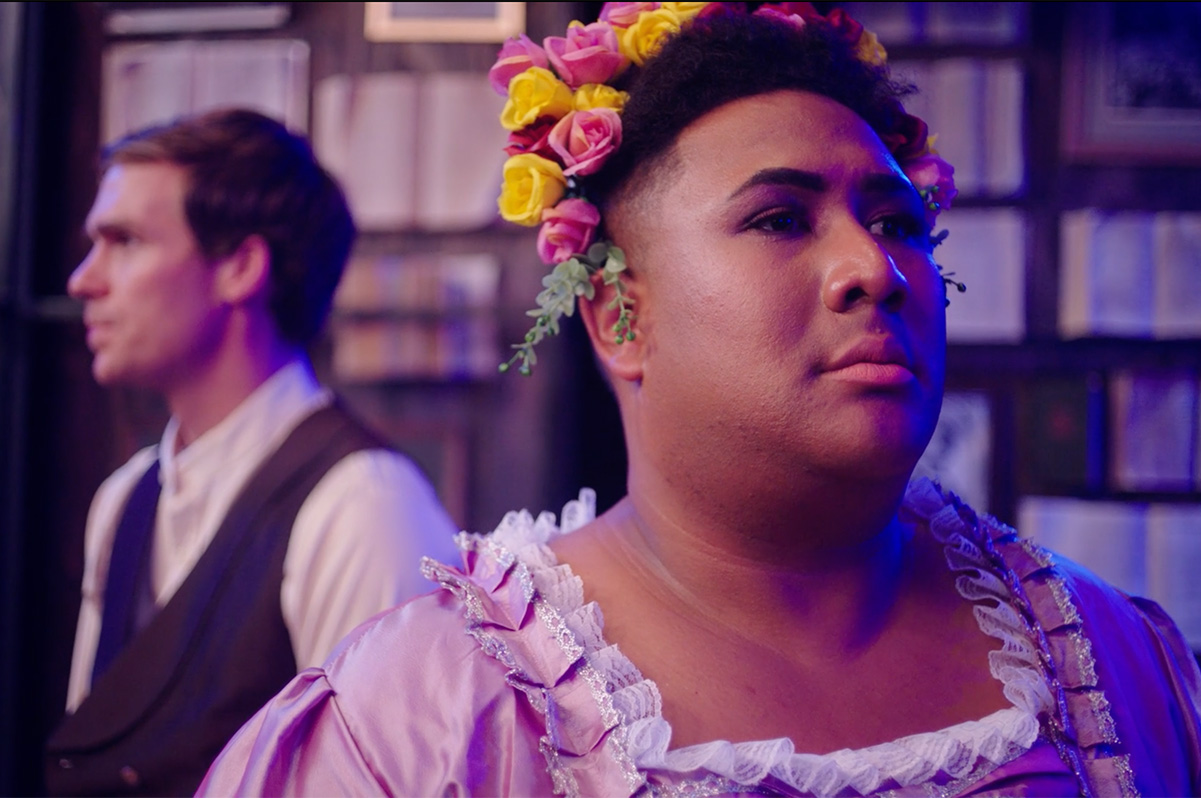
For someone who’s been dead for 160 years, Abraham Lincoln is still hot.
No, we don’t mean it that way, though if we were talking about the Lincoln of “Lavender Men” – a new movie starring and co-written by queer playwright Roger Q. Mason, who also wrote the acclaimed play from which it is adapted – we certainly could be. We’re really just making the observation that the 16th POTUS continues to occupy a central place in America’s national imagination. And in an age when our America is torn by nearly as much division (over many of the same core values) as the one he presided over, it’s impossible not to compare the ideals he has come to stand for with the ones currently holding sway over the country’s political identity, and wonder at how short we have fallen from the mark.
Yet there has always been a gap between the historical reality of Lincoln’s “Great Emancipator” reputation and the romanticized pedestal upon which he has been placed; and if he looms large as an influence over American identity, it’s as much for his enigmatic nature as for the values he represents. Was he a true believer in the principals of “liberty and justice for all” or a political pragmatist who recognized that preserving the nation – and its growing power in the larger arena of world affairs – required the abolition of an increasingly unsustainable system that had divided it? Your answer to that rhetorical question will likely depend on which version of “American Identity” aligns most closely with your own.
It’s also a question that’s further complicated in the context of Lincoln’s private life, something that has itself been the subject of debate as modern historians and scholars consider the questions about his sexuality unavoidably implied in his well-documented biographical record, which reveals not only a pattern of closely bonded male “friendship” with various companions throughout his life but plentiful evidence that the romantic nature of these relationships was something of an “open secret” in his lifetime, as explored in last year’s brash but scrupulously documented “Lover of Men.” If Lincoln was himself an “other,” a queer man who had risen to position and power in a world that despised and shunned people like him, what new light would that cast on his legacy?
That’s the crux of the premise behind “Lavender Men,” which builds a “fantasia” around one of Lincoln’s most intense male relationships – with Colonel Elmer Ellsworth, a young family friend who helped him carry out his 1860 campaign for president and would later become the first “notable” casualty of the Civil War when he was shot while removing a Confederate flag from the window of an inn facing the White House. The film, however, doesn’t take place in a period setting; instead, it happens in an empty modern-day theater – an apropos allusion to the location of Lincoln’s ultimate fate – where the overworked and underappreciated Taffeta (Mason) oversees the production of a play about the romance between Lincoln and Ellsworth (Pete Ploszek and Alex Esola). After a particularly demoralizing performance, the put-upon stage manager ponders alone about their own life – as a queer, plus-sized, Black Filipinx TGNC person trying to find connection and community in a world where they feel invisible – through an imagined retelling of Lincoln’s doomed love story in which the narrative is projected through the lens of their own struggle to be seen, loved, and accepted,
Expanded from the play and directed by co-screenwriter Lovell Holder, a lifelong friend of Mason who helped develop the project and oversaw the original 2022 stage production at Los Angeles’s Skylight Theater Company, the film was in his own words “shot over 10 days on a shoestring budget” – and it admittedly shows. However, it leans into its limitations, letting the spare, isolated atmosphere of the empty theater exert its own influence over the material. In this framing, Taffeta becomes something like a reverse ghost, a spirit from the present haunting a past in which their own unfulfilled longings – and resentments – are reflected through the rumored romance of a president and his “little” man, and their exploration of the narrative, with all its inherent observations about the dynamics of power, gender, status, and physical attraction, ultimately becomes a meditation on the importance of redefining personal identity free from the shaping influence of other people’s experience or expectations.
Needless to say, it’s not the kind of movie that will appeal to every taste; highly conceptual in nature, with a nonlinear storytelling pattern that frequently calls attention to its own artificiality, it might prove perplexing to audiences used to a more traditional approach. Even so, it’s refreshingly unpretentious, acknowledging its own campiness without undercutting the authenticity of the voice which drives it – which is, of course, Mason’s.
Delivering an entirely charismatic, commandingly fabulous, and palpably honest tour de force, the playwright/actor is at the center of “Lavender Men” at every level, evoking our delight, laughter, tears, discomfort, and myriad other shades of response as they take us on their historically themed tour of queer identity, which involves its own collection of repressive and/or demeaning social expectations about “fitting in” – and illuminate this hidden chapter of queer history along the way. Indeed, capturing their performance – which Mason reprises, along with fellow original co-stars Ploszek and Esola, from the stage production – is arguably the film’s most significant accomplishment. It’s a powerful example of the kind of fierce, spirited expression that is rarely seen outside the half-empty houses of underground theaters, well worthy of several repeated viewings.
For Mason, however, the thing that matters most is not their performance, nor even their brilliantly conceived script. Discussing the movie, he describes it as something much bigger than that: “I hope this film serves as a rally cry, a fountain of joy and a grounding of purpose for the LGBTQIA+ movement in the U.S. and abroad at a time when we need stories which affirm, empower and embolden us more than ever.”
“Lavender Men” is showing in limited theaters now. Watch for information on streaming/VOD availability.
Movies
Jacob Elordi rides high in ‘On Swift Horses’
Sony Pictures’ promotions avoid referencing queer sexuality of main characters
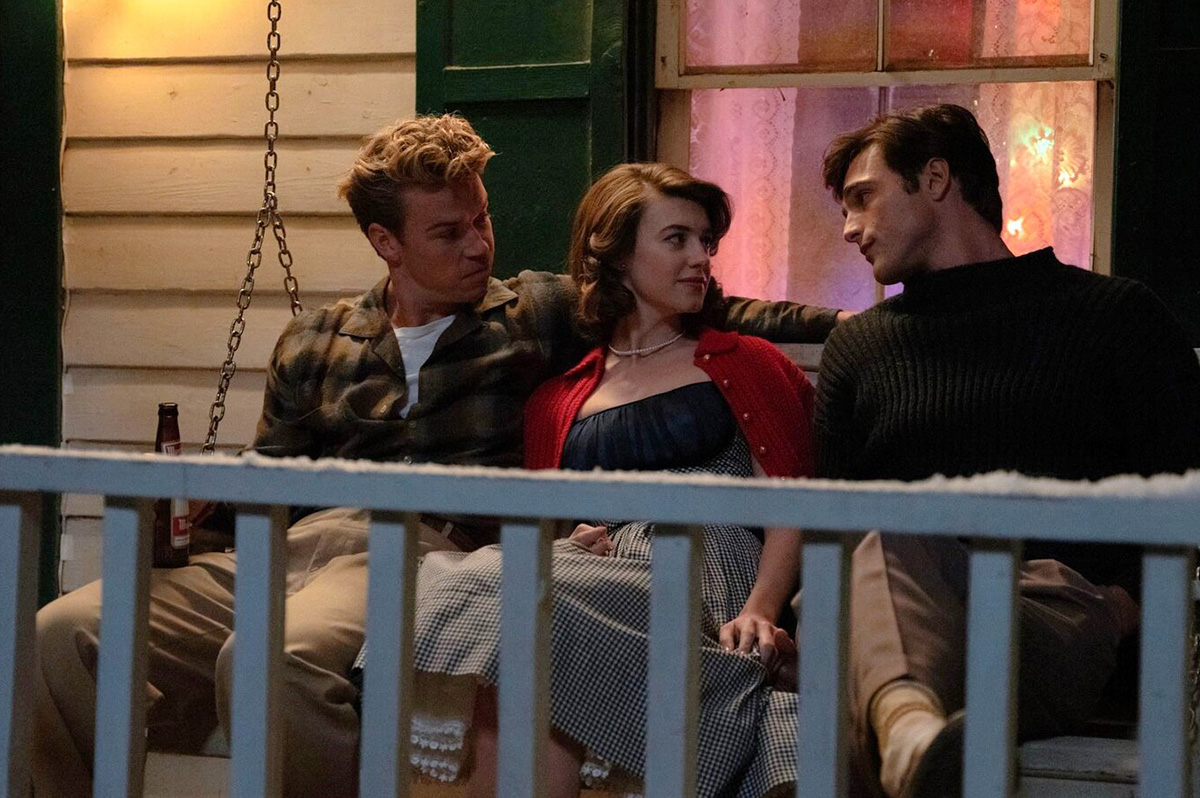
You might not know it from the publicity campaign, but the latest big-screen project for breakout “Euphoria” actor and sex symbol Jacob Elordi is 100% a gay love story.
Alright, perhaps that’s not entirely accurate. “On Swift Horses” – adapted from the novel by Shannon Pufahl and directed by Daniel Minahan from a screenplay by Bryce Kass – actually splits its focus between two characters, the other of which is played by “Normal People” star Daisy Edgar-Jones; but since that story arc is centered around her own journey toward lesbian self-acceptance, it’s unequivocally a “Queer Movie” anyway.
Set in 1950s America, at the end of the Korean War, it’s an unmistakably allegorical saga that stems from the marriage between Muriel (Edgar-Jones) and Lee (Will Poulter), a newly discharged serviceman with dreams of building a new life in California. His plans for the future include his brother Julius (Elordi), a fellow war vet whose restlessly adventurous spirit sparks a kindred connection and friendship with his sister-in-law despite a nebulously strained dynamic with Lee. Though the newlyweds follow through with the plan, Julius opts out in favor of the thrill of a hustler’s life in Las Vegas, where his skills as a card shark gain him employment in a casino. Nevertheless, he and Muriel maintain their friendship through correspondence, as he meets and falls in love with co-worker Henry (Diego Calva) and struggles to embrace the sexual identity he has long kept secret. Meanwhile, Muriel embarks on a secret life of her own, amassing a secret fortune by gambling on horse races and exploring a parallel path of self-acceptance with her boldly butch new neighbor, Sandra (Sasha Calle), as Lee clings obliviously to his dreams of building a suburban family life in the golden era of all-American post-war prosperity.
Leisurely, pensive, and deeply infused with a sense of impossible yearning, it’s the kind of movie that might easily, on the surface, be viewed as a nostalgia-tinged romantic triangle – albeit one with a distinctively queer twist. While it certainly functions on that level, one can’t help but be aware of a larger scope, a metaphoric conceit in which its three central characters serve as representatives of three conflicting experiences of the mid-century “American Dream” that still looms large in our national identity. With steadfast, good-hearted Lee as an anchor, sold on a vision of creating a better life for himself and his family than the one he grew up with, and the divergent threads of unfulfilled longing that thwart his fantasy with their irresistible pull on the wife and brother with whom he hoped to share it, it becomes a clear commentary on the bitter reality behind a past that doesn’t quite gel with the rose-colored memories still fetishized in the imagination of so many Americans.
Fortunately, it counterbalances that candidly expressed disharmony with an empathetic perspective in which none of its characters is framed as an antagonist; rather, each of them are presented in a way with which we can readily identify, each following a still-unsatisfied longing that draws them all inexorably apart despite the bonds – tenuous but emotionally genuine – they have formed with each other. To put it in a more politically-centered way, the staunch-but-naive conformity of Lee, in all his patriarchal tunnel vision, does not make him a villainous oppressor any more than the repressed queerness of Muriel and Julius make them idealized champions of freedom; all of them are simply following an inner call, and each can be forgiven – if not entirely excused – for the missteps they take in response to it
That’s not to say that Minahan’s movie doesn’t play into a tried-and-true formula; there’s a kind of “stock character” familiarity around those in the orbit of the three main players, leading to an inevitably trope-ish feel to their involvement – despite the finely layered performances of Calva and Calle, which elevate their roles as lovers to the film’s two queer explorers and allow them both to contribute their own emotional textures – and occasionally pulls the movie into the territory of melodrama.
Yet that larger-than-life treatment, far from cheapening “On Swift Horses,” is a big part of its stylish appeal. Unapologetically lush in its gloriously photographed recreation of saturated 1950s cinema (courtesy of Director of Photography Luc Montpellier), it takes us willingly into its dream landscape of mid-century America – be it through the golden suburbs of still-uncrowded Southern California or the neon-lit flash of high-rolling Las Vegas, or even the macabre (but historically accurate) depiction of nuclear-age thrill-seekers convening for a party in the Nevada desert to watch an atom bomb detonate just a few short miles away. It’s a world remembered by most of us now only through the memories and artifacts of a former generation, rendered with an artful blend of romance and irony, and inhabited by people in whom we can see ourselves reflected while marveling at their beauty and charisma.
As lovely as the movie is to look at, and as effective as it is in evoking the mix of idealism and disillusionment that defines the America of our grandparents for many of us at the start of the second quarter of the 21st century, it’s that last factor that gives Minahan’s film the true “Hollywood” touch. His camera lovingly embraces the beauty of his stars. Edgar-Jones burns with an intelligence and self-determination that underscores the feminist struggle of the era, and the director makes sure to capture the journey she charts with full commitment; Poulter, who could have come off as something of a dumb brute, is allowed to emphasize the character’s nobility over his emotional cluelessness; Calle is a fiery presence, and Minahan lets her burn in a way that feels radical even today; Calva is both alluring and compelling, providing an unexpected depth of emotion that the film embraces as a chord of hope.
But it is Elordi who emerges to truly light up the screen. Handsome, charismatic, and palpably self-confident, he’s an actor who frankly needs to do little more than walk into the scene to grab our attention – but here he is given, perhaps for the first time, the chance to reveal an even greater depth of sensitivity and truth, making his Julius into the film’s beating heart and undisputed star. It’s an authenticity he brings into his much-touted love scenes with Calva, lighting up a chemistry that is ultimately as joyously queer-affirming as they are steamy.
Which is why Sony Pictures’ promotions for the film – which avoid directly referencing the sexuality of its two main characters, instead hinting at “secret desires” and implying a romantic connection between Elordi and Edgar-Jones – feels not just like a miscalculation, but a slap in the face. Though it’s an eloquent, quietly insightful look back at American cultural history, it incorporates those observations into a wistful, bittersweet, but somehow impossibly hopeful story that emphasizes the validity of queer love.
That’s something to be celebrated, not buried – which makes “On Swift Horses” a sure bet for your must-see movie list.
-

 Congress4 days ago
Congress4 days agoHRC: GOP reconciliation bill would imperil critical LGBTQ-specific programs
-

 World Pride 20253 days ago
World Pride 20253 days agoTourists, locals express concerns about WorldPride security
-

 Rehoboth Beach4 days ago
Rehoboth Beach4 days agoDel. Gov. Meyer to join Washington Blade party in Rehoboth on Friday
-
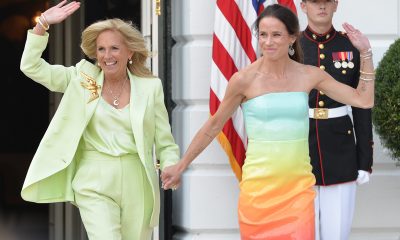
 Rehoboth Beach1 day ago
Rehoboth Beach1 day agoAshley Biden to speak at Blade’s Summer Kickoff Party in Rehoboth Beach

